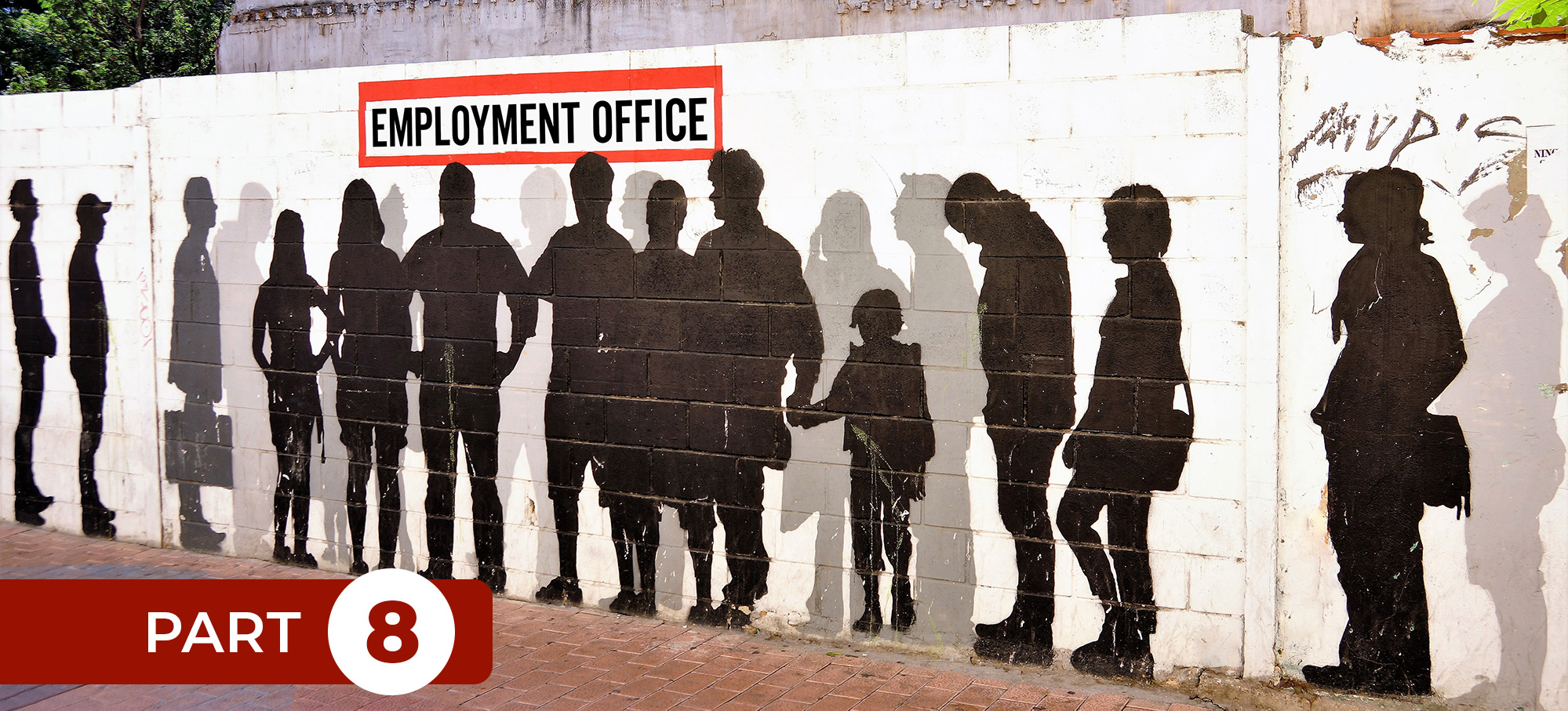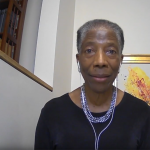This is a continuation of the blog series Today’s White Niggers.
To start reading from the beginning, go to Part 1.
White niggers are in pain, but fewer and fewer of them are in church.
Big-tent evangelical churches used to thrive because bad times drew big crowds (December 14, 2008, The New York Times, “An Evangelical Article of Faith: Bad Times Draw Big Crowds”). But not anymore. Southern Baptist churches, for example, “lost almost 80,000 members from 2016 to 2017, and they have hemorrhaged a whopping one million members since 2003,” as Jonathan Merritt noted in his June 16, 2018 The Atlantic essay “Southern Baptists Call Off the Culture War.”
Big-tent evangelical churches used to thrive because bad times drew big crowds. But not anymore.
These trends indicate something more. Merritt offers the words of pastor Adrian Rogers in his 2002 Southern Baptist Convention address at the annual meeting in St. Louis to show the domino effect: “As the West goes, so goes the world. As America goes, so goes the West. As Christianity goes, so goes America. As evangelicals go, so goes Christianity. As Southern Baptists go, so go evangelicals.”
For years, Southern Baptists criticized liberal denominations for their declines, but as Merritt notes, “their own trends are now running parallel.” Bill Leonard, a professor of Baptist studies and church history at Wake Forest University and the author of The Challenge of Being Baptist, summarizes the problem. “Classic fundamentalist old-guard churches are either dead or dying, and the younger generation is realizing that the old way of articulating the gospel is turning away more people than it is attracting.”
The younger generation has also abandoned mainline churches. Mainline Protestant churches like the United Methodists, United Church of Christ, and the American Baptists still have the most church buildings, but they have the fewest people in them—about 75 on a typical Sunday. And less than 2% of these adults are 25 or younger. Mainline congregations are indeed “in shambles” (former senator Rick Santorum). Or as Ross Douthat put it in his April 8, 2012, New York Times essay: “mainline congregations [are] too institutionally weak, too fragmented and internally divided to bring people from different political persuasions together.”
The younger generation has also abandoned mainline churches.
And the mainline Protestant churches today that have gone the farthest in critiquing America’s inequitable economic and social systems, as John B. Cobb Jr. notes in Spiritual Bankruptcy: A Prophetic Call to Action, “have had the largest losses in membership and resources. Prospects for reversal of these trends are poor, and morale is poor.”[1] Why? Writes Cobb: “People like to feel good about the character and accomplishments of the groups with which they identify. For many people, it has been demoralizing to participate in a community that is emphasizing the evils for which it has been responsible.” Thus Cobb’s point: when you conclude that your own religious institution is racially and economically compromised to the core by its own historic traditions and practices, you create a body of people who condemn their own religious institutions as racist, elitist, sexist, and more.[2]
The clergy in these congregations often falter when trying to create congregations as sacred places that grow emotionally stronger, more resilient, larger, and enlivened anew in trying times.
This problem is not surprising because liberal clergy today by their own admission are not strong spiritual leaders. Ninety-three percent of mainline Protestant senior ministers define themselves as leaders, but only 12% believe they have the spiritual gift of leadership,[3] mainline churches have a credibility problem as spiritual places.
Liberal Christians thus tend to misunderstand the brokenheartedness of most whites in America. They conflate white supremacist and neo-Nazi beliefs and strategies with the terrified feelings of other white niggers. In this liberal scenario, all white niggers get labeled white supremacists. The more adequate label for the condition is terrified souls, some of whom have psychotic breaks and rampage as white supremacists, neo-Nazis, and more.
Liberal Christians thus tend to misunderstand the brokenheartedness of most whites in America.
Consider the stats. One in four American adults now describe themselves as spiritual but not religiously affiliated. Moreover, a third of Americans under 30 do not go to church or to other religious institutions. Millennials are five times more likely than other Americans to self-identify as suffering from a “great deal of stress”[4] and they want “emotional rescue.”[5] They have been referred to as Generation Rx because so many of them eat “prescription drugs like candy.”[6] In five years, they will make up almost half (46%) of America’s workforce. Following current trends, this workforce could become disaffected and dangerous.
Millennials need secular sanctuaries, but they lack access to places that can spiritually rescue them. Mainline churches, on the other hand, have the sanctuaries for this kind of work. What they do not have are the programs or the leaders to inspire and empower.
Can spiritual leaders create new “secular” congregations in underused mainline sanctuaries?
Yes. But only if they avoid the “sin of anti-blackness” discourse. These narratives tend to flail white niggers for being broken by a racial system of white privilege that jacks them up to lay them low.[7] The “sin” focuses attention solely on what the rupture produces: white racism against blacks. Attention is not focused also on what the rupture exposes: emotionally compromised, terrified, and devastated white lives.[8] A singular focus on the “sin of anti-blackness” reduces theological discourse to a binary opposition between blackness and anti-blackness; renders whiteness invisible; and conflates affective issues with cognitive disorders. As a result, the “sin of anti-blackness” becomes a self-perpetuating discourse that reaffirms what it ostensibly proscribes: white racism against African Americans.
Can spiritual leaders create new “secular” congregations in underused mainline sanctuaries? Yes. But only if they avoid the “sin of anti-blackness” discourse.
A case in point: Lutheran minister Joseph Barndt in his book, Dismantling Racism: The Continuing Challenge to White America, explicitly links his belief that all whites are racists to the Christian doctrine of original sin, which claims that through Adam’s sin in the Garden of Eden human nature was corrupted.
Barndt, who is white, insists that whites will always remain sinners because their nature is corrupted by the “original sin of racism.”
Lacking all agency, they can’t effect their own salvation. In short, they need a savior. And in Barndt’s theology, this savior isn’t Christ but, “people of color.” Listen to what he says:
Leadership and direction can only come from [people of color because they] understand racism far better than we do, and they know what needs to be done to eliminate it. Thus, the first step toward breaking the chains of this prison [for white people] is to recognize that we cannot be in charge of the changing.[9]
Barndt’s fundamental error is his assumption that whites are not people of color, too. He has whitewashed their own maltreatment by white America.
Niggers of all colors unite.
[1] John B. Cobb Jr., Spiritual Bankruptcy: A Prophetic Call to Action (Nashville: Abington Press, 2010), 175.
[2] Ibid.
[3] Summary of The Barna Report Examines the State of Mainline Protestant Churches [http://www.barna.org/barna-update/article/17-leadership/323-report-examines-the-state-of-mainline-protestant-churches. Accessed October 28, 2012].
[4] USA Today, February 7, 2013.
[5] Hilary Stout, `Oh, to Be Young, Millennial, And So Wanted by Marketers.’ June 20, 2015 [http://www.nytimes.com/2015/06/21/business/media/marketers-fixation-on-the-millennial-generation.html?_r=0. Accessed April 26, 2016].
[6] Kelly Taterta, `Generation RX Eats Prescription Drugs Like Candy,’ Millennial Magazine, January 27, 2016 [http://millennialmagazine.com/generation-rx-eats-prescription-drugs-like-candy/millennialmagazine.com. Accessed April 26, 2016.]
[7, 8] Thandeka, “Why Anti-Racism Will Fail,” The Journal of Liberal Religion I:1 (October,1999), 1-11. Also see, Thandeka, “Whites: Made In America, Advancing American Philosophers’ Discourse on Race,” The Pluralist: The Journal of the Society for the Advancement of American Philosophy 13:1 (Spring 2018).
[9] Joseph Barndt, Dismantling Racism: The Continuing Challenge to White America (Augsburg Books, 1991) 99.










Comment(1)-
pingback Rev. Dr. Thandeka on white privilege | Phil Ebersole's Blog says
June 24, 2019 at 8:00 am[…] 8. Why White Niggers Are Abandoning Conservative and Mainline Churches. […]